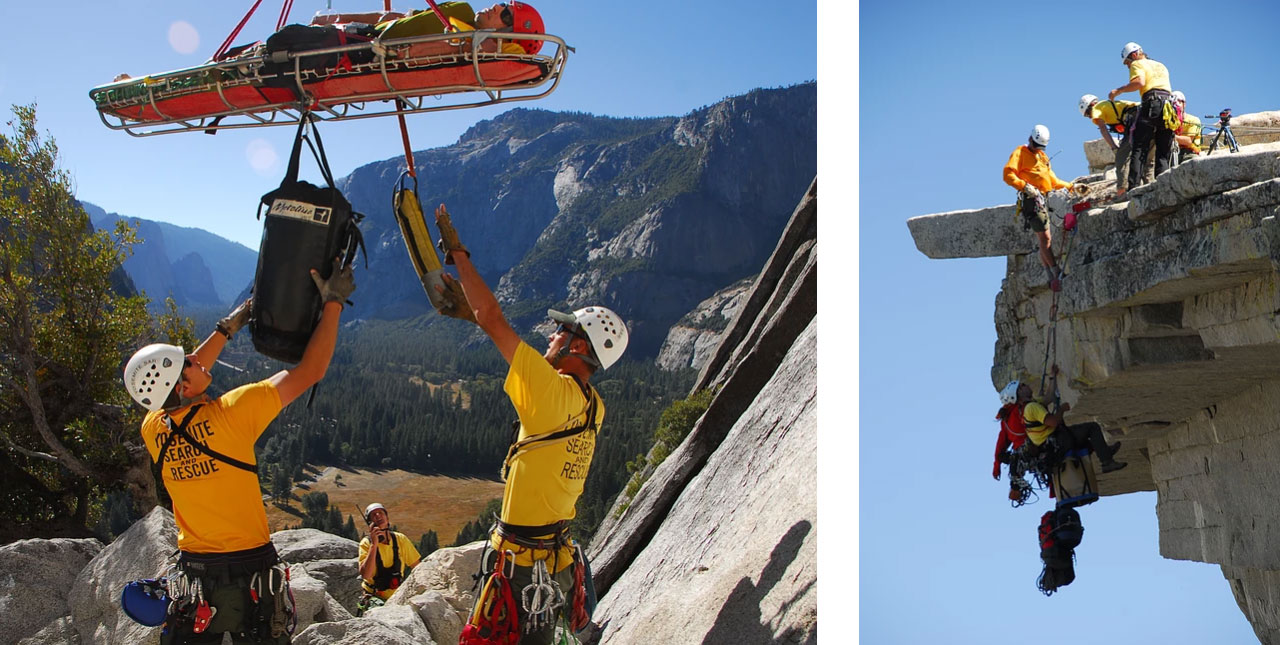Technology
A Double-Edged Sword: Threats to Wilderness from Technology
Motorized vehicles and equipment may be prohibited from wilderness areas, but of course that doesn't mean they’re insulated from modern technology. Often a boon when it comes to studying, monitoring, and enjoying wilderness, technology also poses a threat by altering the wilderness experience, disrupting wilderness processes, and taxing agency resources.

Undoubtedly, the advent of new equipment and digital technologies has benefited outdoor recreation. Technology has helped people spend time in wilderness while impacting the land very little. Modern camp stoves allow cooking without a campfire. Cameras, and now digital cameras, have allowed people to take home memories instead of stones, flowers or other physical memorabilia. Informational websites and mapping resources, like Google Earth, can help visitors be more prepared when they visit wilderness.
However, technology can also perpetuate a false sense of security. "Technology may help people feel that wilderness is smaller, safer and easier." In a study of overnight backpackers to the King Range Wilderness in California, "pro-technology" respondents felt that technology increased safety in wilderness, and would be more likely to use technology to request a rescue. Conversely, "anti-technology" respondents did not agree that technology reduced dangers and made them feel safer, were less likely to engage in risky behavior, and felt strongly that technology cannot substitute for skill, experience, and knowledge. Overall, by changing our expectations of wilderness, technology can lead to increases in rescues for those relying on technology or engaging in excessive risk-taking.

A national survey of wilderness managers in 2014 found that 29 percent of respondents tallied across all agencies with oversight over wilderness considered “visitor use of advanced technology and electronic equipment for navigation or communication” a potential threat to wilderness character, resources, or user experiences in the coming decades.
According to a New York Times article, park rangers say one of the most frustrating new technologies is the personal satellite messaging device (such as SPOT). Models that aren't capable of two-way communication don't allow emergency personnel to evaluate the seriousness of calls, so they must treat all calls as true emergencies. One still-seminal incident involving this sort of device occurred in the Grand Canyon National Park backcountry in 2009. A group of hikers called in rescue helicopters three times by pressing the emergency button on their SPOT device. The first time the hikers said they were out of water. The second time they explained that the water "tasted salty." The third time emergency personnel forced the hikers to evacuate, given that helicopter trips can cost as much as $3,400 an hour. The leader received a citation, and rangers reported that he told them that without the device, "we would have never attempted this hike." Cell phone coverage remains patchy at best in most wilderness areas; however, in the Daniel J. Evans Wilderness, for example, the National Park Service now advises visitors how to properly use cell phones as a communication device during emergencies.

In addition to safety concerns, technology, and the social sharing associated with it, also has the potential to take away the sense of adventure and uncertainty that are part of the wilderness experience. Technology can lead to a loss of the unknown by providing too much information and removing the element of mystery associated with visiting wilderness. The following excerpt from a Montana Headwall Magazine essay describes the dangers of today's tech-savvy temptations:
"One day last summer, I logged onto National Geographic's TOPO! Explorer website, hoping to use its satellite-view feature to scope out forest cover near a couple of Boundary Waters campsites. What the screen threw back at me, though, was a different sort of forest, made up of red and blue digital pushpins--tiny pixilated markers--planted along my proposed route like the flags of an imperial conqueror. It seems mn_hiker08 had been here before--and he wanted to tell me all about it...Weeks later, though, when I took my own trip, mn_hiker08 followed me through the Boundary Waters like Banquo's ghost. All the landmarks seemed weirdly familiar. Everywhere I looked there were giant blue pushpins hovering above the shoreline. There's the outcropping where mn_hiker08 camped! There's where his daughter caught the walleye! Altogether gone was that voyageur vibe, that sense of paddling through an undiscovered country."
Technology can change experience by informing expectations prior to a wilderness visit, but it can also shape experience during a visit. An article exploring Instagram posts made by Pacific Crest Trail thru-hikers, reveals what wilderness experiences look like when visitors enter with specific goals of sharing them and how this may affect wilderness management.
Another example of the technology-related challenges facing wilderness managers is the increasing use of drones, or unmanned aircraft systems. As motorized equipment, drones may not be launched, landed, or operated in wilderness areas. Among other reasons for their prohibition, drones detract from the experience of wilderness users, disturb wildlife, and can interfere with wildland firefighting operations.
Technology also allows people to bring work with them into the outdoors, the antithesis of wilderness the Wilderness Act describes as a place "in contrast" to our "growing mechanization." This has prompted questions like: "Will there be a place in 20 years time where one can completely escape from industrialized society? Will we be able to feel assured that the next person coming down the trail won't have a cell phone...?" Bringing cell phones and other technological devices into wilderness, for work or play, can negatively impact the wilderness experiences of other visitors. The National Park Service, for example, advises that non-emergency cell phone use "detracts from the character of wilderness." Overall, as technology continues to become an increasing part of our lives, we must be cognizant of whether new technologies are compatible with wilderness.